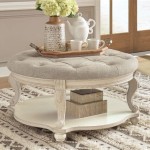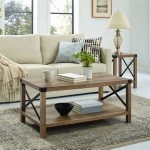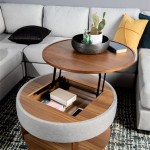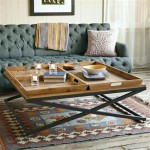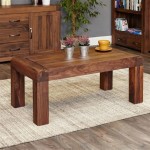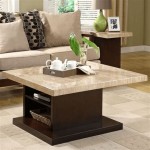How Thick Should A Glass Table Protector Be Cut?
Selecting the appropriate thickness for a glass table protector is a crucial decision that directly impacts its effectiveness, durability, and the overall aesthetic of the furniture it safeguards. The ideal thickness is not a one-size-fits-all answer; rather, it depends on a variety of factors, including the table's material, its intended use, and the desired level of protection. Understanding these factors will ensure that the chosen glass protector provides optimal performance and longevity.
Glass table protectors serve multiple purposes. Primarily, they shield the table's surface from scratches, stains, spills, and heat damage. This is particularly important for delicate or valuable tabletops made of wood, veneer, marble, or glass itself. Beyond protection, a glass protector can also enhance the table's appearance, providing a smooth, reflective surface that complements the existing decor. The thickness of the glass plays a significant role in determining how well it fulfills these functions. Too thin, and it may not offer adequate protection; too thick, and it may appear cumbersome and detract from the table's aesthetic appeal. The selection process, therefore, requires careful consideration and informed decision-making.
Understanding Glass Types and Their Properties
Before delving into the specifics of thickness, it's important to understand the different types of glass commonly used for table protectors and their respective properties. The two most common types are annealed glass and tempered glass. Annealed glass is the standard type of glass produced. Tempered glass, on the other hand, undergoes a heat treatment process that makes it significantly stronger and more resistant to impact. When tempered glass breaks, it shatters into small, relatively harmless pieces, reducing the risk of serious injury. This makes it a safer option, particularly in households with children or pets.
The choice between annealed and tempered glass depends on the application and the level of safety required. For most residential uses, tempered glass is generally recommended due to its enhanced safety features and increased durability. While annealed glass may suffice for low-traffic areas where the risk of impact is minimal, the added cost of tempered glass is often justified by the peace of mind it provides. In commercial settings, tempered glass is often a code requirement for safety reasons.
Beyond annealed and tempered glass, there are also specialized types of glass available, such as laminated glass and heat-resistant glass. Laminated glass consists of two or more layers of glass bonded together with a layer of plastic interlayer. This construction provides exceptional strength and impact resistance, as well as sound dampening properties. Heat-resistant glass is designed to withstand high temperatures without cracking or shattering, making it ideal for use on tables that are frequently exposed to hot dishes or cookware. However, these specialty glasses often come at a higher cost and may not be necessary for all applications.
Factors Influencing the Ideal Thickness
Several factors should be considered when determining the appropriate thickness for a glass table protector. These factors include the table's material, its size, its intended use, and the desired level of protection. Each of these aspects contributes to the overall decision-making process.
Table Material: The type of material the table is made from is a crucial consideration. For delicate surfaces like wood veneer or marble, a thicker glass protector is generally recommended to provide adequate protection against scratches and impacts. These materials are more susceptible to damage than more durable surfaces like solid wood or metal. Conversely, for tables made of already robust materials, a thinner glass protector may suffice. For glass tables, the protector is primarily intended for scratch resistance and ease of cleaning.
Table Size and Shape: The size and shape of the table also play a role in determining the appropriate thickness. Larger tables require thicker glass to prevent bending or flexing, which can lead to cracking or breakage. Similarly, tables with unusual shapes or unsupported edges may benefit from thicker glass to provide added stability and support. The weight of the glass itself also needs to be considered, as a very large, thick piece of glass can be quite heavy and may require additional support to prevent damage to the table or floor.
Intended Use: The intended use of the table is another important factor to consider. Tables that are used frequently for dining or activities that involve heavy objects or sharp utensils require thicker glass to withstand the wear and tear. Conversely, tables that are primarily used for decorative purposes or in low-traffic areas may only require a thinner glass protector. Think about the typical activities that will take place on the table and the potential for spills, scratches, or impacts. A frequently used dining table, for example, will require a more robust protector than a rarely used coffee table.
Desired Level of Protection: Ultimately, the desired level of protection is a subjective factor that depends on the individual's preferences and priorities. Some individuals may prioritize maximum protection and opt for the thickest possible glass, while others may prioritize aesthetics and choose a thinner glass that is less noticeable. Consider the value of the table, its sentimental significance, and the potential cost of repairing or replacing it if it were to be damaged. Also, consider the lifestyle of the users, including the presence of children or pets, who may be more prone to causing accidents.
Recommended Thicknesses Based on Common Scenarios
While the ideal thickness varies depending on the specific factors mentioned above, here are some general recommendations based on common scenarios:
Coffee Tables and Side Tables: For coffee tables and side tables made of wood, veneer, or glass, a thickness of 1/4 inch (6mm) to 3/8 inch (10mm) is generally sufficient. This thickness provides adequate protection against scratches, spills, and minor impacts, while also maintaining a sleek and unobtrusive appearance. For tables used primarily for decorative purposes, a 1/4 inch (6mm) thickness may be sufficient. However, for tables used more frequently or those made of more delicate materials, a 3/8 inch (10mm) thickness is recommended.
Dining Tables: Dining tables, which are subject to more frequent use and potential for spills and impacts, typically require a slightly thicker glass protector. A thickness of 3/8 inch (10mm) to 1/2 inch (12mm) is generally recommended for dining tables made of wood, veneer, or marble. This thickness provides added protection against hot dishes, sharp utensils, and accidental bumps. For larger dining tables or those with unsupported edges, a 1/2 inch (12mm) thickness is preferable.
Desks and Work Surfaces: For desks and work surfaces, a thickness of 1/4 inch (6mm) to 3/8 inch (10mm) is typically sufficient, depending on the type of work being done. For general-purpose desks, a 1/4 inch (6mm) thickness may be adequate. However, for desks used for activities that involve sharp objects or heavy materials, a 3/8 inch (10mm) thickness is recommended. This provides added protection against scratches, dents, and other damage.
Outdoor Tables: Outdoor tables, which are exposed to the elements, require a thicker and more durable glass protector. A thickness of 1/2 inch (12mm) or thicker is generally recommended for outdoor tables made of wood, metal, or stone. This thickness provides added resistance to wind, rain, and temperature fluctuations. Tempered glass is highly recommended for outdoor use due to its increased strength and safety features.
It's important to note that these are just general guidelines, and the specific thickness required may vary depending on the individual circumstances. Consulting with a professional glazier or glass supplier is always recommended to ensure that the chosen glass protector is appropriate for the intended application.
In addition to thickness, other factors to consider when selecting a glass table protector include the edge finish, the clarity of the glass, and any special coatings or treatments. A polished edge finish provides a smooth, safe edge that is less likely to chip or crack. Low-iron glass offers greater clarity and reduces the green tint that is often present in standard glass. Special coatings, such as anti-glare or stain-resistant coatings, can further enhance the performance and appearance of the glass protector.

Clear Table Cover Protector 2mm Thick 84 X 40 Inch For Dining

Fab Glass And Mirror 24 In X 36 Clear Rectangle Table Top 3 8 Thick Beveled Edge Polished Tempered Radius Corners 24x36rect10thbe The Home Depot

Vevor Pvc Table Protector 42x96 Inch Clear Plastic Desk 1 5mm Thick

Exactmade Clear Table Protector Usa Made Safe 26 Round 2mm Thick Ultra Smooth Vinyl Desk Mat Cut To Size For Office

1 5mm Thick 42x108 In Long Clear Plastic Table Protector Cutting Wipeable Glass

Anyhi 30 Inch Acrylic Glass Table Top Transpa 1 4 Bevel Dining Pads Coffee Cover Round Diameter Cut To Size Flat

Glass On Top Of Wood Table How To Protect With

Clear Table Protector 2mm Thick 48 X 32 Inch Plastic Cover

2mm Thick 42 X 96 Inches Clear Table Cover Protector For Dining

Tabletop Protectors Cut To Size London Plastics
Related Posts


